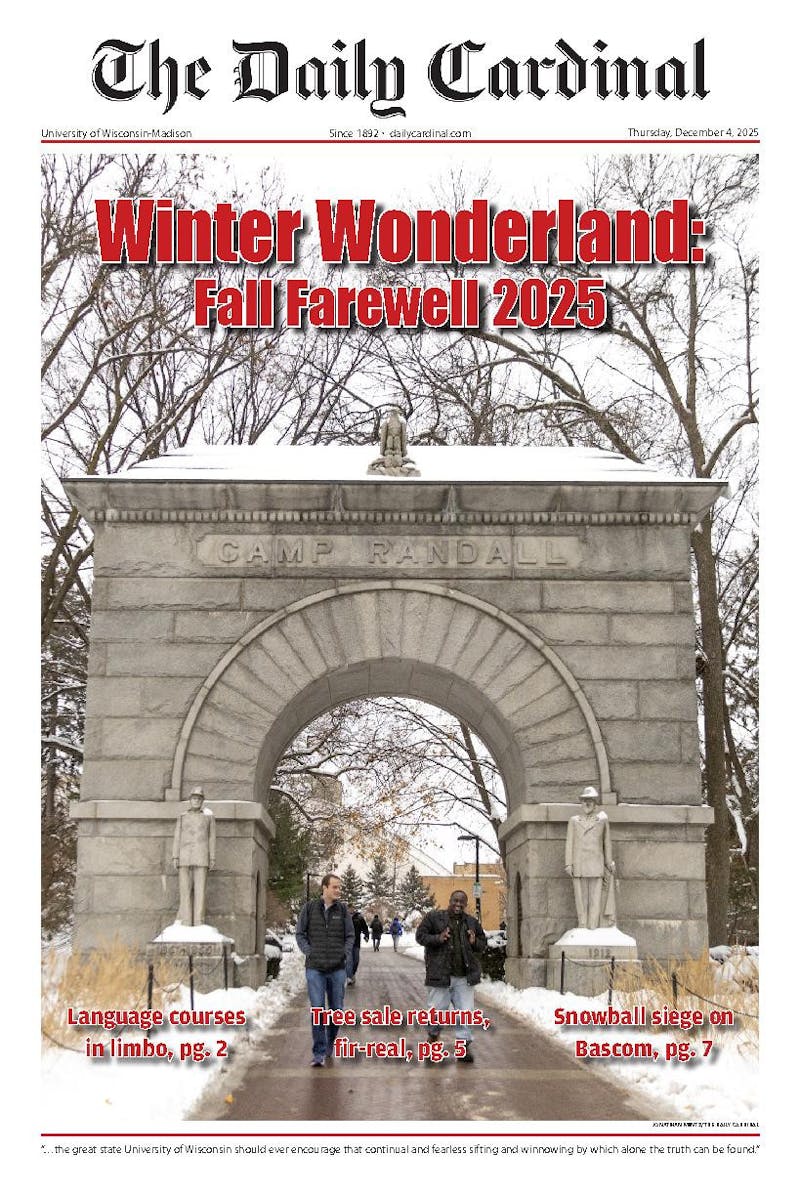As the school year winds down at UW-Madison, Plan 2008 is also coming to an end. Plan 2008 is an initiative created by UW-Madison administrators to increase the percentage of minorities attending UW-Madison and thereby promote diversity on campus. Plan 2008 also aims to close the achievement gap between white and non-white students. The program, which started in 1998, has successfully increased the undergraduate minority population to just under 4 percent of the total undergraduate population. While Plan 2008 has been slightly successful, it needs to be heavily revised before such a plan is reinstated for another 10 years.
What the university is hoping to accomplish is no doubt an excellent vision. By improving diversity on campus, students are gaining a vital part of knowledge that cannot be obtained by sitting through lectures.
Also, the acceptance of students from different backgrounds and cultures contributes new ideas and perspectives to campus. By implementing Plan 2008, the university has tackled the growing issue of the racial achievement gap.
Still, while there are definite advantages to increasing the diversity on our campus, the way UW-Madison has gone about it is wrong.
Using an approach closer to affirmative action in admitting minority students is not the right way to increase diversity.
An inherent problem with accepting students based on their ethnicity is the increase of racial tensions among the rest of the population. White students who are rejected from a university may blame minority students for taking their place even though the white student may not have been as well prepared for that particular school. Furthermore, white students may feel that minority students did not earn their place in the university fairly and were accepted based solely on their race. This resentment may take its toll on minority students, who in turn could potentially lash back, creating a vicious cycle of racial prejudice and conflict.
Also worth noting is the large price tag attached to Plan 2008. Although the plan was relatively inexpensive at the beginning, the cost has since skyrocketed to over $5 million in 2006 alone. At this point, one must question if the increase in minority students to only 4 percent of the total undergraduate population is worth such a massive investment, much of which is paid by taxpayers and students. With the amount of money that has been spent, shouldn't we be seeing better results?
The way UW-Madison is going about increasing diversity and decreasing the racial achievement gap is clearly not paying off.
Nevertheless, we cannot really blame UW-Madison for struggling to drastically increase diversity on campus through a cheaper and non-divisive approach. Many minority groups across Wisconsin lack a competitive education at the high-school level. The university is trying to combat this by employing a program called Pre-College Enrichment
Opportunity Program for Learning
Excellence (PEOPLE), which aims to raise the quality of education received at the
K-12 level for students of all races. In this way, minority students can receive an education closer to that received by white students. Thus, they have a better chance of being accepted into a college on a more competitive basis. The goal of PEOPLE is much more realistic, and the outcome of this program is more long-term than Plan 2008. Therefore, the university should aim to increase the range and scope of the PEOPLE program.
Increasing diversity on campus is vital, but the way the university is going about it is unproductive. By instituting a form of affirmative action, we are only perpetuating racial tension, as well as wasting money. Instead, the university should be using a more color-blind approach to accepting students and allocating more money toward the PEOPLE program so that all students in Wisconsin are able to finish high school on a more level playing field. By doing this, not only would diversity increase on campuses all across Wisconsin, but the achievement gap between white and non-white students would also decrease significantly. While another 10-year program aimed at increasing diversity may not be the wisest decision, helping minority students finish high school with the same level of education as that of white students will have a positive impact for the UW system in the long run.
Ryan Dashek is a sophomore majoring in biology. Please send responses to opinion@dailycardinal.com.





